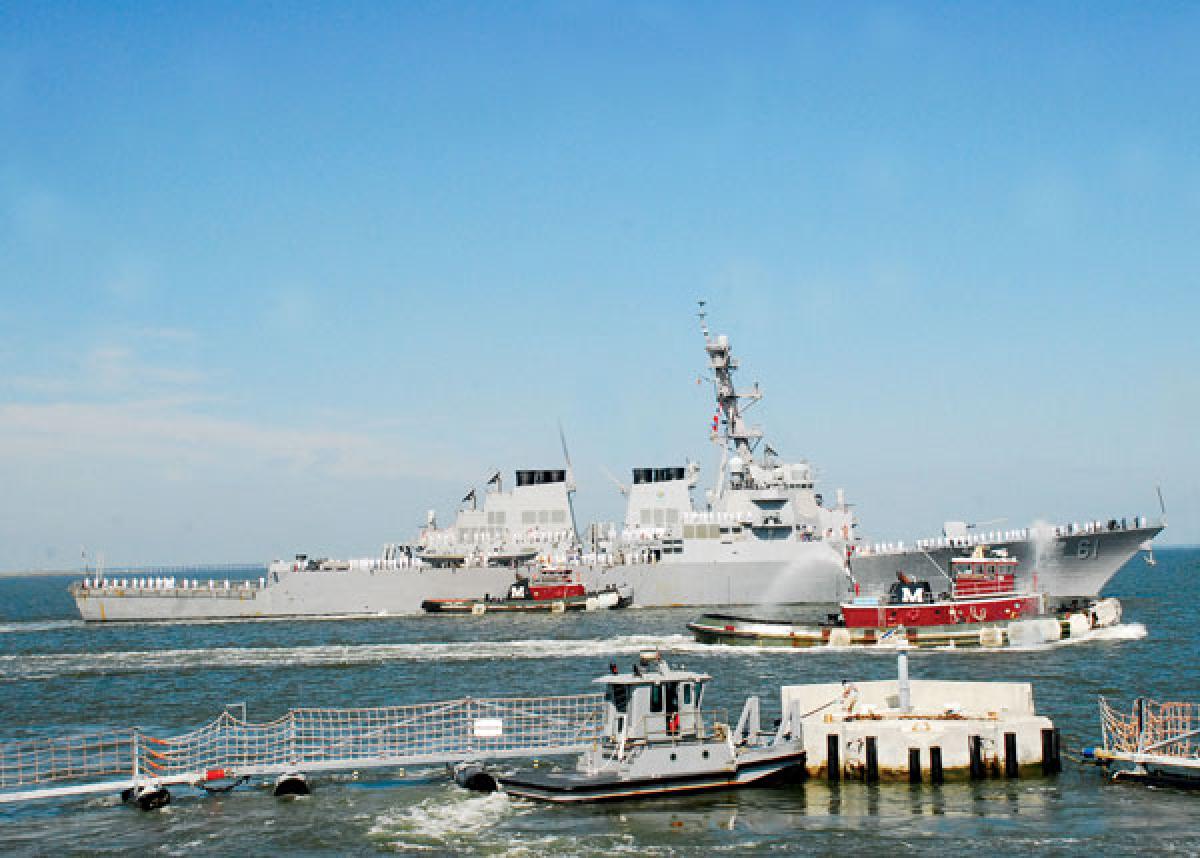A wide-ranging debate is taking place over future levels of federal spending, including defense spending, in the context of the deficit-reduction process established by the Budget Control Act of 2011 (S. 365/P.L. 112-25 of 2 August 2011). However it is resolved, it is clear that defense spending will be reduced from levels projected in the Fiscal Year 2012 budget submission.
Even though DOD spending rose considerably in real terms over the past decade, there was not a commensurate increase in procurement rates for ships and other equipment for the Navy. Consequently, in terms of force modernization in a period of declining resources, the Navy will not be able to “live off the fat of the land,” as it and the other services did during the 1990s downturn.
The Navy’s ability to contend with this problem will be complicated by its need to increase funding for surface-ship maintenance to redress readiness problems that have developed in recent years. Further, the Navy’s base budget will reabsorb operational expenses that in recent years have been handled through wartime supplemental appropriations and the Overseas Contingency Operations part of the DOD budget. Navy efforts may also be challenged by limits on the service’s ability to control per-capita costs for personnel pay and benefits, which have risen significantly and are determined in part by decisions made outside the Navy.
The Navy has identified and implemented a variety of cost-saving efficiency measures and taken steps to reduce the cost of its long-range shipbuilding plan. This has helped preserve funding for higher-priority items, but it also means that at least some of the economic and programmatic “low-hanging fruit” has already been picked. Moreover, it is not clear that the Navy will be able to keep all the savings it generates from any new cost reductions that it identifies.
Aside from further efficiencies, Navy policymakers and supporters have several options for responding to a situation of declining defense spending. One is to argue for a greater Navy share of the DOD budget, citing the winding down of combat operations in Iraq and the anticipation of the same in Afghanistan, a need to counter improved Chinese maritime military forces, and the increase in demands for ballistic-missile-defense-capable Navy ships resulting from the new Phased Adaptive Approach for BMD in Europe. Observers outside the service are making this case, but it is not certain how much of a shift in DOD budget shares toward the Navy will occur.
Additional options include concentrating forward deployments of available ships in the highest-priority areas (such as the western Pacific, to counter improved Chinese maritime military forces); extending the service lives of older destroyers and other ships; making greater use of forward home-porting, multiple crewing, and long-duration deployments with crew rotation (a.k.a. Sea Swap); expanding the use of unmanned vehicles as complements to or substitutes for manned platforms; and transferring some Navy responsibilities to allied and partner countries while encouraging them to invest more in their own naval forces.
These possibilities raise significant issues in terms of feasibility, cost, and downsides. They are by no means perfect. If they were, they presumably would have been implemented already. But if the Navy’s resources decline enough, consideration of imperfect options may become unavoidable.
Lastly, it should be noted that declining resources can make old ways of doing business unaffordable and break down resistance to new ideas. Such a situation might spur innovative solutions in areas such as force architecture, force management, and key technologies that can help the Navy perform its missions.
In “The Treaty Navy, 1919–1937,” historian Philip T. Rosen argued that the naval innovations of the interwar years were, at least to some degree, an adaptive response to restrictions imposed on the Fleet by the naval-arms-limitation treaties of the 1920s (in Kenneth J. Hagan, ed., In Peace and War: Interpretations of American Naval History, 1775–1978 [Greenwood, 1978]). An analogous argument might be made about the potential for financial restrictions to prompt new ideas in naval forces.



